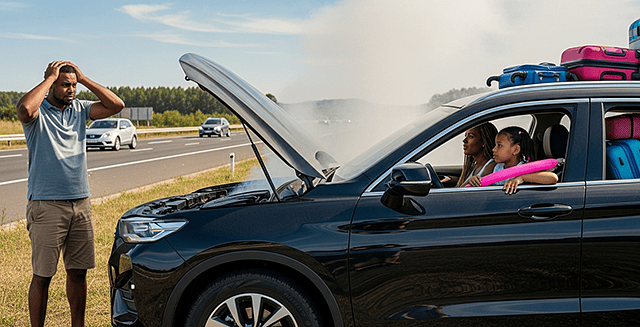Knowledge Hub

HAIL SEASON is here – MAKE SURE YOUR SOLAR PANELS ARE COVERED
This year, rooftop solar capacity increased by an unprecedented 349% in South Africa. With the start of the hail season, those who have escaped the clutches of loadshedding by harnessing the power of the sun, could be wondering if their solar system can weather a hail storm and how to insure it adequately.
“Most solar panels can withstand extreme weather conditions and take a bit of a beating thanks to their protective and durable sheet of thick, tempered glass. That said, a severe hailstorm can result in small cracks or scratches to the protective glass. Depending on the storm’s severity, and the impact of the hailstones, the solar cells themselves can also be damaged,” says Martin van Wyk, spokesperson for Dialdirect Insurance.
Spiked hailstones (hail clusters) and hailstones the size of a ping-pong ball, golf-ball or tennis-ball are the ones to watch out for when it comes to solar system damage.
“Although vehicles are usually the hardest hit, major hailstorms also result in millions of rands in damages to roofs, windows, sliding doors, skylights and outdoor equipment. Homeowners who have installed solar panels are advised to ensure that their buildings insurance has storm related damages as an insured peril,” says Martin van Wyk, spokesperson for Dialdirect Insurance.
Buildings insurance covers the loss or damage to the actual building structure because of fire or explosion, storm, flood, lightning strike and ground movement. Solar panels are fixed to the property and therefore, covered under a buildings insurance policy.
“Solar panels do not need to be specified separately, but homeowners do need to inform us and adjust their total sum insured accordingly,” notes van Wyk.
When it comes to proactively protecting your solar panels, Dialdirect recommends the following:
· Invest in reputable brands and high-quality panels: Tier 1 panels are typically tested to withstand hail of up to 37mm in diameter (golf ball-sized hail), but Tier 2 and 3 panels tend to be more vulnerable to damage.
· Ask your installer about adjusting the angle of your panels to minimise the hail risk.
· Once the hailstorm has subsided inspect your solar panels for damage from a
distance. If you think they may have been damaged, do not climb on your roof. If there is damage, there could be leaking voltage.
Dialdirect also offers the following general tips to keep in mind during a hailstorm:
At home:
· Gutters should be kept clean and free of debris to channel ice and water away from the roof.
· Outdoor equipment and furniture should be moved undercover, if possible, when a heavy storm is forecast.
· Roof structures should be checked to ensure that they won’t buckle under the weight of the hail in the event of a blocked drainage system.
On the road:
· Don’t park under trees as there is a risk of falling branches and debris.
· If you’re on the road and get caught in a hailstorm, look for cover. This could include a covered car park or a petrol station. Take extreme care when pulling-over, put on your hazard lights, and don’t risk your safety or the safety of others by dashing madly for cover. Stay in your car and only leave the safety of your sheltered spot when the storm has passed.
· It’s safer not to drive through a storm when visibility is poor, the roads are slick and there is a risk of aquaplaning through deep pools of water and hail.
· Remember that, with the sudden drop in temperature during a hailstorm, your car’s windows will be more prone to fogging up, hampering visibility, so make sure that your car’s defogger is working properly.

We Have Great
Insurance Products
Need car, home & Life Insurance? We offer a wide range of insurance products. Switch & get cash back on insurance premiums.
Related blogs

General News
5 quick insurance wins for young professionals

General News
Spring Back Into Socializing: 10 Etiquette Rules for Post-Hibernation Gatherings





